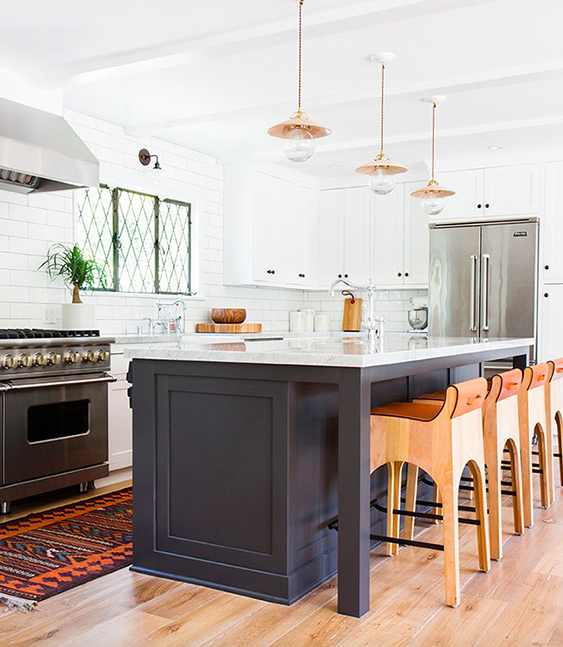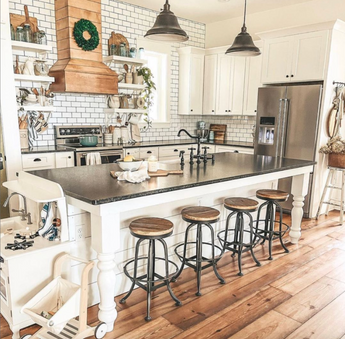How to Install a Kitchen Island Leg for Optimum Stability and Style
How to Install a Kitchen Island Leg for Optimum Stability and Style
Blog Article
The Importance of a Sturdy Kitchen Island Leg in Creating a Practical Food Preparation Area
A sturdy kitchen island leg offers as a fundamental element in establishing a practical cooking atmosphere, giving necessary support for both the kitchen counter and different kitchen area tasks. As cooking areas progress into multifunctional locations for food preparation, dining, and mingling, the option of materials and style factors to consider for island legs comes to be progressively vital.
Advantages of Sturdy Island Legs
Supplying crucial assistance, tough kitchen area island legs play a crucial role in boosting the functionality and toughness of kitchen area islands - kitchen island leg. These legs not only birth the weight of the kitchen counter and any type of extra products put on the island, however likewise add to the general stability of the framework. A well-supported cooking area island ensures that it stays practical and upright, even under hefty use, which is specifically crucial in hectic kitchen atmospheres
In addition, sturdy island legs can improve the visual allure of the kitchen. They offer a strong framework that can match numerous style styles, from modern-day to standard. This flexibility enables house owners to tailor their cooking area islands according to personal taste while guaranteeing that the structural honesty continues to be uncompromised.
In addition to their encouraging role, robust cooking area island legs can likewise boost security. A secure island lowers the risk of mishaps brought on by tipping or tottering, which is particularly essential in families with youngsters or elderly people. In addition, solid legs can assist in a smooth flow of activities, permitting efficient meal prep work and social interactions within the cooking area space. Eventually, investing in strong kitchen area island legs is vital for a useful and aesthetically pleasing cooking area.
Materials for Cooking Area Island Legs
When selecting materials for kitchen island legs, sturdiness and visual allure are crucial variables to take into consideration,. The most common products consist of wood, steel, and crafted wood, each offering unique advantages.
Wood, such as oak, maple, or cherry, is a classic selection due to its stamina and timeless elegance (kitchen island leg). It can withstand significant weight and is immune to wear, making it optimal for high-use kitchen area environments. In addition, hardwood can be stained or painted to match different kitchen designs
Metal legs, often crafted from stainless-steel or functioned iron, give a modern and industrial appearance. They are extremely strong and can sustain substantial loads while being resistant to moisture and warmth, which is advantageous in a cooking area. Metal legs can likewise be easily cleansed, boosting their functionality.

Style Factors To Consider for Stability
The option of materials for kitchen area island legs directly influences the style considerations for stability. When making a cooking area island, it is paramount to examine the weight-bearing capability of the chosen products. Much heavier products, such as strong timber or metal, usually provide better security, especially under the stress of daily usage.
Additionally, the leg design need to integrate proper geometry to enhance stability. A larger base enhances the assistance location, lessening the danger of wobbling or tipping. Factor to consider ought to likewise be provided to the height of the legs; out of proportion leg lengths can bring about inequality, endangering the total stability of the island.
Additionally, the distribution of weight throughout the island is important. Making sure that the leg placement aligns with the heaviest elements, such as kitchen counters and home appliances, will additionally improve security.
Upkeep Tips for Long Life

Cleaning up is one more essential element of maintenance. Depending upon the material of the legs-- whether timber, steel, or composite-- appropriate cleansing methods should be employed. For wooden legs, a gentle wipe with a wet fabric and an appropriate timber cleaner will certainly assist protect their finish. Steel legs may call for a light polish to visit this web-site stop rust and preserve their gloss.
Furthermore, tightening up bolts and screws regularly can make certain security and stop wobbling. If the kitchen island experiences heavy usage, consider reinforcing the legs with extra braces or sustains to enhance toughness. Finally, applying a safety surface or sealer can secure against wetness and stains, extending the lifespan of the legs. By following these upkeep tips, home owners can ensure their kitchen island legs remain durable and useful for years to find.
Choosing the Right Leg Style
Regular upkeep ensures that kitchen area island legs stay practical and durable, yet selecting the appropriate leg design is similarly important for both looks and support. The selection of leg design can substantially affect the general style and harmony of your cooking area.

Performance is another vital element. For example, thicker legs or those with a tough base can sustain heavier counter tops and devices, boosting the island's utility. On the other hand, slender legs might create a ventilated look, suitable for lighter styles yet potentially much less encouraging.
Verdict
In summary, the relevance of strong kitchen island legs can not be overstated in the development of a functional cooking location. These legs provide important support, boost stability, and add to the general aesthetic of the kitchen. By meticulously picking suitable materials and styles, in addition to carrying out correct upkeep practices, the durability and efficiency of cooking area islands can be made certain. Ultimately, spending in durable island view it legs is basic to achieving a effective and secure cooking environment.
A strong kitchen area island leg serves as a basic part in establishing a practical food preparation setting, giving required support for both the counter top and different cooking area tasks.Offering crucial assistance, durable cooking area island legs play a crucial duty in improving the functionality and durability of kitchen area islands. Ultimately, investing in tough kitchen area island legs is necessary for a functional and visually pleasing cooking location.
Factor to consider must additionally be given to the company website elevation of the legs; disproportionate leg lengths can lead to discrepancy, endangering the overall security of the island.
Wooden legs give heat and a traditional appearance, while metal legs offer a commercial and modern feel.
Report this page